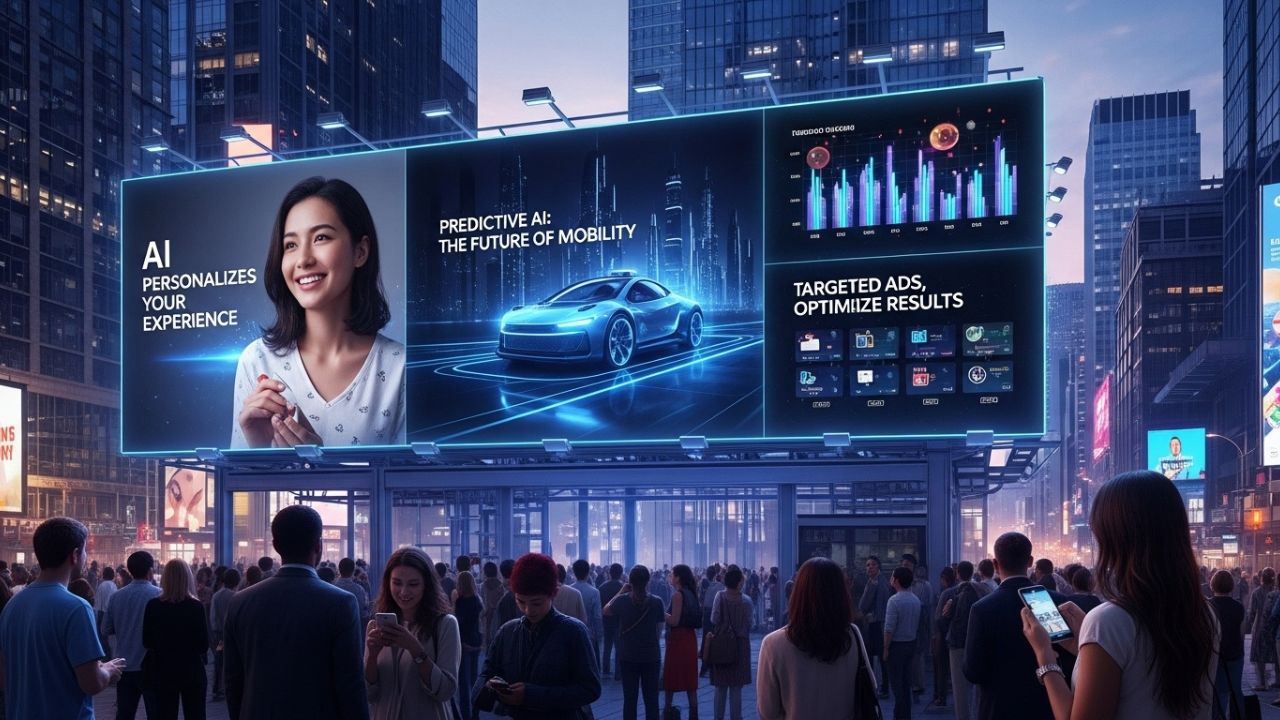Introduction: The Rise of Algorithmic Creativity
AI in Advertising: In 2025, the advertising landscape is being rewritten by the arrival of artificial intelligence in creative production. Once dependent on brainstorming sessions, production teams, and lengthy iterations, modern campaigns now leverage algorithms that promise speed, scale, and personalization never seen before. AI-powered tools generate compelling ad copy, design high-converting visuals, and optimize slogans for diverse platforms—sometimes in a matter of seconds. For agencies and brands, this unlocks tremendous efficiency, enables rapid A/B testing, and helps target niche audiences with unprecedented precision.
How AI Generates Ads, Slogans, and Visuals
The Technology Driving AI Advertising
At the heart of this revolution are generative models trained on massive datasets of previous ads, brand guidelines, audience reactions, market trends, and visual elements. These systems use deep learning, NLP (Natural Language Processing), and computer vision to:
- Draft slogans and headlines that fit the campaign’s goals and brand voice.
- Produce visuals and layouts tailored for each channel (social, search, display).
- Generate multiple ad versions for instant testing and personalization.
- Score and predict ad performance before a campaign even launches.
AI is no longer just a recommendation engine—it is an active participant, crafting the creative assets that define modern marketing.
Read Also: The Rise of AI Filmmakers: How Generative AI is Redefining Movie Production
Workflow Example: Automating the Creative Process
1. Campaign Brief to AI Input
Brands start by entering goals, target persona, product details, and preferred tone. The AI then scans competitor ads, industry benchmarks, and customer personas.
2. Multi-Format Output
Tools like AdCreative.ai, Jasper, Pencil, and Creatify produce:
- Ad copy (slogans, headlines, CTAs) in seconds.
- Polished images and video thumbnails matched to platform specs.
- Animated ads or short-form videos, including product showcases or influencer-style ads.
- Email or landing page variations for split testing.
3. Automated Personalization
Performance data, audience segmentation, and behavioral signals are fed back into the model, allowing real-time adaptation of visual style and messaging for unique user groups.
4. A/B Testing and Optimization
AI platforms continuously analyze which creatives are performing best, pausing weak variations and scaling winners—often without human intervention.
Leading AI Advertising Tools of 2025
| Tool | Best For | Standout Capabilities |
| AdCreative.ai | Multi-channel ad generation | Headline/CTA/image creation, platform targeting, predictive scoring |
| Jasper | Copywriting and visual design | Tone-matching, slogan drafting, art+ads integration |
| Pencil | Creative iteration and forecasting | Remixing old ads, performance prediction, scaling |
| Creatify | UGC-style video ad creation | Vertical ad automation, voiceover synthesis |
| Surfer SEO | Content optimization | SEO integration, keyword alignment, density tuning |
| Visme AI | Infographic and B2B ads | Data visualization, brand templates |
| Albert.ai | Digital ad campaign automation | Smart bidding, multi-platform orchestration |
Real-World Examples: AI Advertising in Action
Hyper-Targeted Social Ads
AI analyzes thousands of audience micro-segments for a new app launch, instantly drafting tailored versions:
- “Boost your productivity” for busy professionals
- “Smarter study made simple” for students
Each version gets customized visuals—a laptop for work, books for education.
Agile E-Commerce Campaigns
Brands run a dozen ad variants for a flash sale. AI monitors clicks and conversions in real time, supporting only the best-performing versions.
B2B and Infographics
AI streamlines content-heavy creatives—turning product specs and case studies into infographic ads, each optimized for LinkedIn or display platforms.
Advantages and Opportunities
Speed and Efficiency
A single marketer can launch dozens of creative tests before lunch, compressing weeks of production and review into hours. AI’s automation means small teams compete with big agencies.
Data-Driven Personalization
AI creative platforms ingest live performance metrics and user data to refine targeting, messaging, and even product positioning—minimizing spend and maximizing ROI.
Cost Reduction
Routine creative work, repetitive design tweaks, and manual A/B testing are handled by AI, allowing human talent to focus on high-level brand strategy.
Challenges and Considerations
Brand Consistency and Control
Automated ad creation can lead to off-brand tone or inconsistent visuals. Leading platforms combat this by letting brands upload guidelines, color palettes, and example ads, teaching the AI to stay on message.
Creative Originality
While AI tools can remix and iterate, standout campaigns still benefit from human insight, narrative, and emotional “zing.” Some worry about creative sameness when too much is automated.
Ethics and Ad Policy
Many networks demand clear labeling for AI-generated content, especially in political or health/finance campaigns. Marketers must be transparent and respect platform rules.
Read Also: post-production ai
Frequently Asked Questions
Can AI fully replace human advertising teams?
AI can automate ideation and production, but strategy, innovation, and brand storytelling require human leadership.
Are AI-generated ads approved for all platforms?
Most major channels accept them, though quality, policy compliance, and originality checks remain essential.
Does AI guarantee better ad performance?
AI speeds up testing and adaptation but only data-driven refinement and strong product-market fit ensure long-term ROI.
How can brands safeguard brand identity with AI ads?
Use built-in brand controls, train models on prior campaigns, and always preview before launch.
Are custom images and voiceovers generated by AI safe from copyright issues?
Most platforms utilize proprietary datasets, but marketers should check licensing, especially for celebrity likenesses or trending art.
Conclusion: The Future of AI-Driven Ad Creativity
AI-powered advertising is an engine for speed, scale, and agility—helping brands move faster and experiment more boldly than ever. The best marketers combine AI’s infinite iterations, personalization, and predictive tools with strong creative direction and clear brand stewardship. As the landscape grows more competitive and media fragments further, the new competitive advantage lies in merging human insight with the “machine muse”—delivering not just more ads, but better ones, built for each moment and audience.

17 thoughts on “AI in Advertising: Generating Campaigns, Slogans, and Visuals in Seconds”